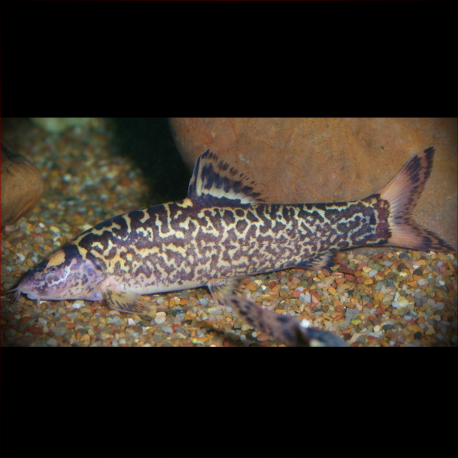More info
Datasheet
| Minimum Tank Size | 240 litres / 63.40 US gallons |
| Maximum Size | 15.0cm / 5.91inches |
| Temperature | 15.5°C / 59.90°F - 21°C / 69.80°F |
| Hardness | 5.04dgH / 90ppm - 20.00dgH / 357ppm |
| pH | 6.5-7.5 |
General Description
Leptobotia Taeniops, commonly known as the honeycomb loach, is a poorly understood species within the aquarium trade, often traded under this name. Belonging to the family Botiidae, these loaches exhibit a range of color variations, from plain to reticulated, with hues spanning from brown to pink. Endemic to China and northern Vietnam, they possess distinctive characteristics, including a short sub-ocular spine, a laterally-compressed body, and a deep caudal peduncle.
Aquarium Setup
When setting up an aquarium for L. Taeniops, a flowing stream mimicry should be created with a substrate of rocks, gravel, water-worn boulders, and driftwood. Providing shaded areas with arranged roots or branches and potential cover such as PVC piping is recommended. While most aquatic plant species may struggle in this environment, hardy varieties such as Microsorum, Bolbitis, or Anubias spp. can be attached to the decor. Bright lighting is essential for aufwuchs growth. Clean water with ample dissolved oxygen and water movement is crucial for their well-being, necessitating the use of external filters and powerheads to maintain stable conditions.
Behaviour
Leptobotia spp. are not typically aggressive but should not be housed with significantly smaller or slow-moving species, as they may be intimidated by its size and active behavior. They tend to form complex social hierarchies, with a minimum group size of 3-4 individuals recommended to avoid potential stress or aggression. Solitary individuals may exhibit withdrawn or aggressive behaviors, especially towards similar-shaped fishes, while dominant specimens in pairs or trios can stress the others, leading to feeding issues.
Feeding and Diet
In their natural habitat, L. Taeniops are presumed benthic predators, primarily preying on insects, crustaceans, and smaller fish. To replicate this diet in captivity, a varied food selection comprising live or frozen bloodworms, Tubifex, chopped shellfish, earthworms, and high-quality sinking dried foods should be offered to ensure their nutritional needs are met.
Reproduction & Dimorphism
There is no recorded information regarding the reproduction of L. Taeniops in aquarium settings. Sexual dimorphism in this species remains unknown, but it is hypothesized that mature females may exhibit a heavier body compared to males.
Habitat and Distribution
Habitat: Predominantly found in well-oxygenated, running water environments with substrates of rocks and gravel, L. Taeniops is commonly present in riverine habitats such as rocky streams and boulder-filled headwater streams. While they may also inhabit lakes and reservoirs due to human disruptions like damming, breeding activities are unlikely in such artificial settings.
Distribution: Endemic to the middle and upper regions of the Yangtze River in China, particularly concentrated in Hunan province and Dongting Lake, L. Taeniops faces habitat threats from human activities like dam construction and pollution. Populations with reticulated color patterns are observed towards the eastern extents of their range.

